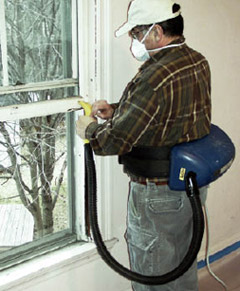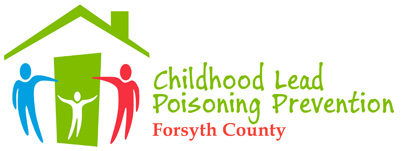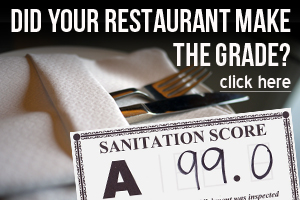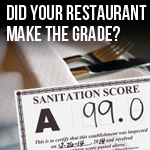 About 75% of houses and apartments built before 1978 contain lead-based
paint, which is the leading cause of lead poisoning.
About 75% of houses and apartments built before 1978 contain lead-based
paint, which is the leading cause of lead poisoning.
Homeowners who live in their own home may conduct
paint stabilization (painting over existing paint) and/or
renovations without being a certified professional. Homeowners conducting do-it-yourself
projects can create large amounts of lead dust and should take precautions not to
expose themselves, their family, their neighbors, their home or their neighbors’
homes to lead dust and debris which can cause elevated blood lead levels.
Homeowners should Always:
- Work wet by dampening or misting surfaces with water prior to sanding or scraping to reduce and minimize lead dust and debris
- Restrict access to the area where work is being done
- Protect the floor with plastic for easy clean-up
- Protect furnishings or other non-moveable items
- Remove items that can be moved to other areas
- Cover the ground in areas being painted
- Protect themselves by wearing a dust mask, protective clothing, eye goggles, gloves
- Clean-up the area where work is being conducted at the end of the work day by removing work materials and debris
- Clean the area using specialized cleaning English Version/Spanish Version
Homeowners should Never:
- Power sand or grind without proper HEPA vacuum attachments
- Strip paint with Methylene Chloride
- Conduct uncontrolled hydro-blasting or abrasive blasting
- Dry scrape or sand
- Conduct open flame burning
- Use a heat gun over 1,100°F
- Eat, smoke or drink in the work area
- Vacuum with a shop vacuum or blow debris with a leaf blower
Improperly removing, painting or repairing lead-based paint can increase the danger to your family.
When properly managed and maintained, lead-based paint poses little risk. Chipping, peeling or cracking lead-based paint needs immediate attention. If you rent, talk to your landlord about having a certified professional properly repair these areas.
Disclosure Law
Federal law requires that individuals receive a pamphlet from the EPA called “Protect your family from Lead in Your Home” English Version/Spanish Version before renting or buying houses or apartments built before 1978.
Renting
Landlords are required to disclose known information on lead-based paint and lead-based paint hazards before leases take effect. This may only be known if the owner or landlord had a lead-based paint inspection conducted by a certified professional. The lease must include a disclosure form as to whether lead-based paint is known or unknown to be present.
Buying
Sellers are required to disclose known information on lead-based paint and lead-based paint hazards before selling a house. This may only be known if the owner or landlord had a lead-based paint inspection conducted by a certified professional. Sales and contracts must include a disclosure form as to whether lead-based paint is known or unknown to be present. Buyers have up to 10 days to have a lead-based paint inspection of the home by a certified professional, at the cost to the potential buyer.
Renovating
Anyone renovating houses or apartments built before 1978 must be a certified professional and provide the owners or tenants with a pamphlet from the EPA called “Lead Safe Guide to Renovate Right”.












